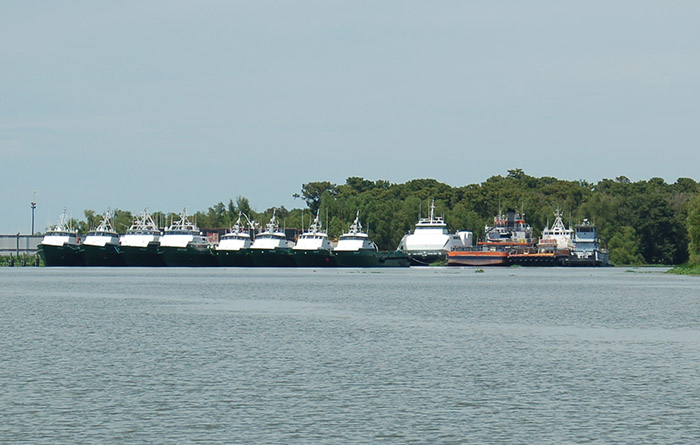Last week was good for the oil and gas industry. Despite oil prices falling nearly 4% to a two-month low, the CEOs of the industry’s two largest oilfield service companies declared that the bottom for this cycle had been reached and better days lay ahead. Moreover, Saudi Arabia’s oil minister, the supposed perpetrator of the war on high-cost U.S. shale producers, declared that the oil glut was over. Supporting this was the Baker Hughes rig count, which added a net 15 rigs last week – 18 more on land, but three fewer offshore rigs.
Over the past eight weeks, the land rig count increased seven times, adding nearly 17% more rigs. During the same period, the offshore rig count rose in only one of those eight weeks, and has shrunk from 24 to 19 active rigs. The industry continues to announce layoffs – service providers, oilfield equipment manufacturers and oil operators. Employment is traditionally a lagging indicator of a market’s development, something often forgotten as optimism about the future of a business runs ahead of the reality for workers.
On Schlumberger’s second quarter earnings call, CEO Paal Kibsgaard said, “…in spite of the continuing operational and commercial headwinds, we have now reached the bottom of the cycle.”
The issue for offshore workers was Kibsgaard’s comment that “in the U.S. Gulf of Mexico, activity was weaker as additional deepwater exploration rigs were released and the move to development activity slowed.” That was supported by the nearly 21% drop in active Gulf rigs in the past two months.
Moreover, Kibsgaard noted, “Pricing remained under massive pressure in all land and offshore markets in North America.”
The optimism for better days ahead was captured by Kibsgaard’s comment that “…signs have started to emerge of customers recognizing that pricing levels have now fallen to unsustainable levels, leading to a growing risk of destroying capabilities and capacity required in the future.”
Kibsgaard’s observation had been preceded by comments from Halliburton CEO Dave Lesar that “…there was a growing survivor mentality out there, and you can’t underestimate the positive change in attitude that we’re seeing in our North American customers. There is a spring in their step that I didn’t see earlier in the year and in almost every case, they are talking about adding rigs, buying assets or doing something value accretive. In short, they are getting back to business.”
After 20 months of industry devastation – about the average of the worst past industry downturns – it is not unreasonable to think that the worst of the downturn is over. We tend to side with the optimism of Kibsgaard and Lesar. The problem is that workers may still be at risk, especially in the offshore business due to its very long business cycle and high-cost structure. Solving those two issues will take longer than the land market, thereby extending the pain for workers, but the skies are brighter.




